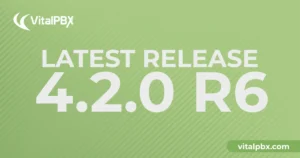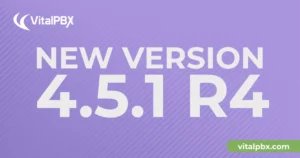Stop Wasting Time: The Hidden Costs & Hours Lost to Legacy PBX Updates
In the fast-paced world of modern business, time is arguably your most precious commodity. Yet, many organizations unknowingly hemorrhage this valuable resource, battling with outdated technology. One of the prime culprits? Your legacy Private Branch Exchange (PBX) system. While it might seem like a steadfast component of your communication infrastructure, the hidden time sink of managing legacy PBX updates is a significant drain on productivity, IT resources, and ultimately, your bottom line. This isn’t just about occasional maintenance; it’s an ongoing, often frustrating, commitment that diverts focus from strategic growth.
Many businesses cling to their old phone systems due to perceived cost savings or the “if it ain’t broke, don’t fix it” mentality. However, the reality is that the time spent coaxing these aging systems along, wrestling with compatibility issues, and manually implementing patches accumulates into a substantial operational burden. As we head further into 2025, the gap between legacy capabilities and modern business needs widens, making these updates increasingly complex and time-consuming.
The Deceptive Calm: Unpacking the Time Drain of Legacy PBX Updates
At first glance, a legacy PBX might seem stable. Calls go in, calls go out. But beneath this surface of functionality lies a growing vortex of time-consuming tasks that slowly erode your IT team’s efficiency and focus. The challenge of managing old phone system updates isn’t just an occasional inconvenience; it’s a persistent operational drag.
The “If It Ain’t Broke” Fallacy: Postponing Updates, Multiplying Problems
The temptation to delay updates on a seemingly functional legacy PBX is strong. Each update cycle can feel like a gamble – will it fix one thing and break another? Will it require significant downtime? This reluctance, however, often leads to a snowball effect. Minor issues are ignored, security patches are deferred, and small incompatibilities are worked around rather than resolved.
Over time, these deferred tasks accumulate, transforming what might have been a straightforward update into a monumental undertaking. When an update finally becomes unavoidable, IT staff must navigate a minefield of potential conflicts and cascading failures, consuming far more time than regular, incremental updates would have.
The Patchwork Quilt: Complexity of Managing Obsolete Hardware and Software
Legacy PBX systems often resemble a patchwork quilt of aging hardware components and outdated software versions. Manufacturers may no longer support older hardware, making replacement parts scarce and expensive. Software updates, if available, might not be compatible with all existing hardware elements or other integrated systems.
This leads to a laborious process where IT teams spend countless hours:
- Sourcing rare or refurbished parts.
- Testing patches in isolated environments to avoid system-wide crashes.
- Manually configuring individual components.
- Troubleshooting interoperability issues between different software versions and hardware.
Each step is a potential time sink, turning routine maintenance into a complex, resource-intensive project. As an example, imagine needing a specific interface card for a 15-year-old PBX model; the search alone can take days, if not weeks.
Scarcity of Expertise: The Dwindling Pool of Legacy PBX Technicians
As technology evolves, so does the skillset of IT professionals. Expertise in managing and updating decades-old PBX systems is becoming increasingly rare. Younger IT staff may lack the training and experience with these archaic systems, while seasoned veterans familiar with them are retiring or moving to modern technologies.
This scarcity means that when complex issues arise during an update, finding qualified support can be difficult and costly. Businesses might rely on expensive external consultants or spend excessive internal hours as their teams try to learn on the fly, further exacerbating the time drain. This reality underscores the mounting pressure to explore modern communication solutions that are more aligned with current IT expertise.
Beyond the Clock: Calculating the True Time Cost of Legacy PBX Maintenance
The time spent on legacy PBX updates isn’t just measured in the hours an IT technician is actively working on the system. The true cost is far broader, encompassing direct labor, productivity losses across the organization, and missed strategic opportunities. Understanding these multifaceted time costs is crucial for appreciating the full impact of clinging to outdated communication technology.
Direct Time Costs: Scheduled Downtime, Manual Patching, and Troubleshooting
These are the most visible time expenditures associated with legacy PBX updates:
- Scheduled Downtime: Many legacy PBX updates require the system to be taken offline. Planning and executing this downtime, often outside of business hours to minimize disruption, means overtime for IT staff and careful coordination.
- Manual Patching: Unlike modern systems that often feature automated or streamlined update processes, legacy systems usually require manual application of patches. This can be a meticulous and error-prone task, consuming significant technician hours.
- Troubleshooting: Post-update issues are common with older systems. Identifying the root cause of a problem in a complex, aging infrastructure can take hours, sometimes days, of dedicated troubleshooting. This involves checking logs, testing components, and potentially rolling back changes.
Consider a scenario where a critical security patch for a legacy PBX takes an IT engineer an entire day to research, test, and deploy, followed by another half-day of troubleshooting unexpected call routing issues. That’s 1.5 days of highly skilled labor diverted to just one update cycle.
Indirect Time Costs: Lost Productivity, Security Vulnerabilities, and Missed Opportunities
The less obvious, but often more significant, time costs include:
- Lost Employee Productivity: During PBX downtime or periods of instability post-update, employees who rely on phone communications (sales, support, etc.) cannot perform their duties effectively. This lost productivity across multiple departments adds up quickly.
- Time Spent Addressing Security Breaches: Outdated PBXs are prime targets for security threats. A successful breach due to an unpatched vulnerability doesn’t just compromise data; it demands an enormous amount of time for investigation, remediation, stakeholder communication, and recovery. According to cybersecurity advisories like those from CISA, unpatched systems are a leading cause of breaches.
- Missed Strategic Opportunities: When IT teams are constantly bogged down with reactive maintenance of legacy systems, they have less time for proactive, strategic initiatives that could drive business growth, such as implementing new collaboration tools or improving digital customer experiences. The opportunity cost of this diverted focus is substantial.
The Ripple Effect: Impact on IT Morale and Strategic Initiatives
Constantly wrestling with outdated, problematic technology can be demoralizing for IT staff. The frustration of repetitive, low-impact work on legacy PBX updates, instead of engaging with innovative projects, can lead to burnout and lower job satisfaction. This, in turn, can affect staff retention and the overall effectiveness of the IT department.
Furthermore, the unpredictable nature of legacy PBX maintenance makes long-term IT planning difficult. Resources earmarked for strategic projects may suddenly need to be reallocated to address an urgent PBX issue, derailing progress and hindering innovation. Migrating to a system like VitalPBX can free up these valuable resources.
Navigating the Security Minefield: Risks and Compliance Burdens of Aging PBX Updates
Beyond the direct time investment, managing updates for legacy PBX systems in 2025 involves navigating an increasingly treacherous landscape of security vulnerabilities and stringent compliance requirements. The effort required to keep these old systems secure and compliant is a significant, often underestimated, time burden.
Open Doors for Threats: Unpatched Vulnerabilities in Legacy Systems
Legacy PBX systems, by their very nature, are often riddled with known vulnerabilities that cybercriminals actively seek to exploit. Manufacturers may have ceased providing security patches for older models, or the patches themselves might be difficult to implement without disrupting critical operations.
Each unpatched vulnerability represents an open door for:
- Toll Fraud: Attackers gain unauthorized access to make expensive international or premium-rate calls, leaving your business with hefty bills.
- Eavesdropping: Sensitive conversations can be intercepted, leading to data breaches and loss of confidential information.
- Denial of Service (DoS) Attacks: Your phone system can be rendered inoperable, crippling business communications.
- System Compromise for Wider Attacks: A compromised PBX can become a gateway for attackers to infiltrate other parts of your network.
The time spent reacting to a security incident caused by an unpatched legacy PBX – identifying the breach, containing the damage, restoring services, and notifying affected parties – can dwarf the time that would have been spent on proactive updates with a modern system.
Meeting 2025 Compliance Standards: A Growing Challenge for Old PBXs
Industries like healthcare (HIPAA), finance (PCI DSS), and any organization handling personal data (GDPR, CCPA) face strict compliance mandates. As of 2025, these regulations increasingly scrutinize the security of all communication systems, including PBXs.
Legacy PBXs often lack the features and audit trails necessary to meet these evolving standards easily. Demonstrating compliance can involve:
- Manual log collection and analysis: A time-consuming process prone to errors.
- Implementing complex workarounds: To compensate for missing security features.
- Lengthy audit preparations: Gathering evidence from disparate, outdated systems.
The administrative overhead and time spent trying to force a non-compliant legacy PBX to meet modern standards is a continuous drain, diverting resources from core business functions. Reputable IT resources like Gartner often highlight the increasing compliance burden associated with outdated technologies.
The Data Breach Domino Effect: Financial and Reputational Damage
Should a security breach occur due to an inadequately updated legacy PBX, the time costs extend far beyond immediate remediation. The domino effect includes:
- Forensic Investigations: Hours spent by internal teams and external experts to understand the scope of the breach.
- Legal Consultations: Time spent with legal counsel navigating disclosure requirements and potential liabilities.
- Customer Support Overload: Managing inquiries and concerns from affected customers or partners.
- Reputation Management: Significant time and effort to rebuild trust and repair brand damage.
These long-tail time costs can plague an organization for months, if not years, all stemming from the initial failure to adequately manage the security of an aging phone system.
Escaping the Time Trap: Modern VoIP Solutions vs. Legacy PBX Management
The relentless cycle of time-consuming legacy PBX updates doesn’t have to be your reality. Modern Voice over IP (VoIP) PBX solutions offer a streamlined, efficient alternative that reclaims valuable IT hours and empowers your team to focus on strategic initiatives rather than firefighting outdated technology.
The VitalPBX Advantage: Streamlined Updates and Simplified Management
Modern PBX systems, such as VitalPBX, are designed with ease of management and updates in mind. Key advantages include:
- Centralized Management Interface: Intuitive web-based GUIs allow administrators to manage all aspects of the phone system, including updates, from a single dashboard. This drastically reduces the time spent navigating complex command-line interfaces or disparate management tools common in legacy systems.
- Automated or Semi-Automated Updates: Many modern PBXs offer notifications for new updates and can often perform these updates with minimal manual intervention, sometimes even scheduling them during off-peak hours automatically.
- Reduced Hardware Dependency: Software-based VoIP PBXs lessen the reliance on proprietary, aging hardware. Updates are primarily software-driven, simplifying the process and eliminating the hunt for obsolete components.
- Built-in Security Features: Modern systems are developed with current security best practices, often including features like firewalls, intrusion detection, and encryption, which are regularly updated as part of the software. This proactive approach reduces the time spent patching countless individual vulnerabilities.
For example, updating VitalPBX can be as simple as a few clicks in the admin portal, a stark contrast to the days often required for a complex legacy PBX update cycle. For more insights into how modern systems improve business, check out our article on the benefits of VoIP for business.
Cloud vs. On-Premise VoIP: Flexibility in Updates and Maintenance
Modern VoIP solutions offer deployment flexibility, each with its own benefits regarding updates:
- Cloud-Hosted PBX: With a cloud solution, the provider typically handles all backend infrastructure maintenance and updates. This completely offloads the update burden from your IT team, freeing them entirely from this task.
- On-Premise VoIP PBX (like VitalPBX): While your team still manages the on-premise server, the update process for the PBX software itself is vastly simplified compared to legacy hardware. You retain control but benefit from modern software architecture that makes patching and upgrading far less labor-intensive.
Choosing between cloud and on-premise depends on various factors, but both offer significant time savings in update management compared to traditional PBXs.
Feature Rich, Time Savvy: How Modern PBXs Enhance Productivity Beyond Just Calls
The time savings with modern PBXs extend beyond just the update process. They come packed with features that enhance overall business productivity, which legacy systems simply can’t offer:
- Unified Communications (UC): Integrating voice, video, messaging, and presence into a single platform saves employees time by streamlining communication workflows.
- Mobility Features: Apps that allow employees to use their business line on their smartphones or laptops ensure they stay connected and productive anywhere, reducing missed calls and communication delays.
- CRM Integration: Linking your phone system with your CRM automates call logging and provides instant access to customer information, saving sales and support teams valuable time on every call.
By adopting a modern PBX, you’re not just simplifying updates; you’re investing in a platform that actively contributes to a more efficient and productive work environment.
Answering Your Top Questions About Legacy PBX Update Burdens
Navigating the complexities of PBX systems can raise many questions, especially when considering the time and resources involved with older technology. Here are answers to some frequently asked questions about the time sink of legacy PBX updates.
How much time is typically spent on legacy PBX updates?
This varies greatly depending on the age and complexity of the system, but it’s not uncommon for IT staff to spend several hours, even full days, per significant update or patch cycle. This includes research, planning, testing, deployment, and troubleshooting. When you factor in emergency fixes or issues arising from deferred updates, the cumulative time can easily equate to weeks per year for a single IT specialist.
What are the biggest security risks of not updating an old PBX?
The primary risks include toll fraud (unauthorized expensive calls), eavesdropping on sensitive conversations, denial-of-service attacks that cripple your communications, and the PBX being used as a gateway to launch further attacks on your network. Outdated systems often have well-known, unpatched vulnerabilities that cybercriminals actively exploit.
Can I integrate my legacy PBX with new business tools like Microsoft Teams or a modern CRM?
Generally, no, or only with extreme difficulty and custom development. Legacy PBXs were not designed for the interconnected digital ecosystem of 2025. They lack the APIs and modern protocols necessary for seamless integration with cloud services, CRMs, or collaboration platforms. Attempting such integrations is often a significant time drain with limited success.
When is the right time to replace a legacy PBX system?
Key indicators include:
- Increasing time and cost for maintenance and updates.
- Difficulty finding spare parts or qualified technicians.
- The system lacks features crucial for modern business (e.g., mobility, UC).
- Concerns about security vulnerabilities and compliance.
- The system is hindering productivity or scalability.
If you’re experiencing several of these, it’s likely time to explore modern alternatives. Consider if your current system supports your business goals for 2025 and beyond.
How does a modern PBX like VitalPBX simplify updates?
VitalPBX, and similar modern VoIP PBXs, simplify updates through user-friendly web interfaces for management, often providing one-click update mechanisms or clear guidance. Updates are typically software-based, eliminating hardware compatibility nightmares. Many modern systems also allow for scheduled updates during off-peak hours to minimize disruption. Plus, security patches are rolled out more frequently and are easier to apply.
Reclaim Your Time: The Future is Modern Communication
The evidence is clear: the hidden time sink of managing legacy PBX updates is a substantial and often underestimated burden on businesses. From the direct hours spent by IT staff wrestling with outdated hardware and software, to the indirect costs of lost productivity, security vulnerabilities, and missed strategic opportunities, the cumulative impact is significant. As we navigate the demands of 2025, clinging to these archaic systems is no longer a viable strategy; it’s a direct impediment to efficiency and growth.
Continuing to pour precious time and resources into a depreciating asset like a legacy PBX means diverting focus from innovation and core business objectives. The complexities of manual patching, the scarcity of expert knowledge, and the ever-present security risks create a cycle of reactive maintenance that stifles progress.
It’s time to break free from this outdated paradigm. Modern VoIP solutions, like VitalPBX, offer a pathway to streamlined communication management, simplified updates, enhanced security, and a wealth of productivity-boosting features. By embracing these contemporary technologies, you can empower your IT team, improve overall business efficiency, and, most importantly, reclaim countless hours that can be reinvested into driving your organization forward.
Ready to stop the clock on wasted time and modernize your business communications?
Discover the efficiency and power of a modern phone system. Download VitalPBX today and experience the difference firsthand! Take control of your communications and your time.




